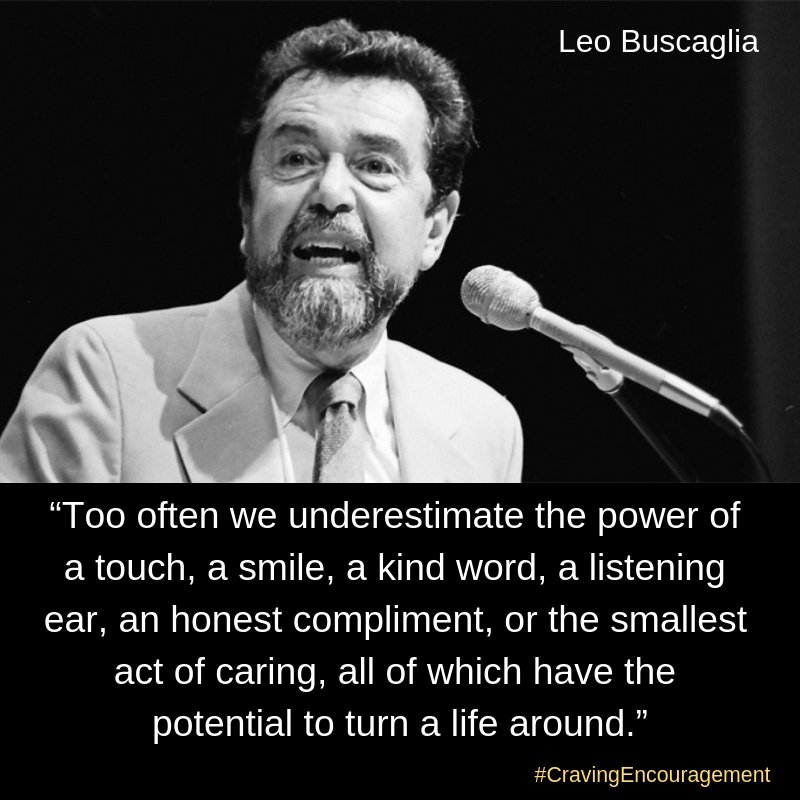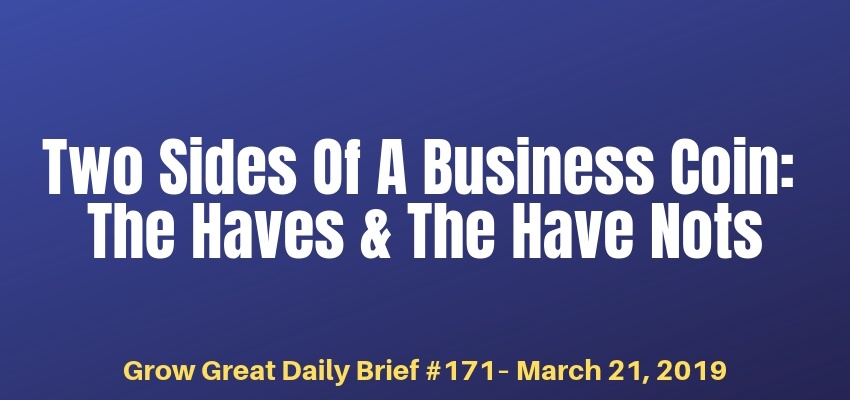The Reward Of Suffering Is Experience – Grow Great Daily Brief #175 – March 27, 2019
Podcast: Play in new window | Download (Duration: 6:05 — 6.1MB)
Subscribe: Apple Podcasts | Spotify | RSS | More
Harry Truman said that.
The reward of suffering is experience.
He was right, of course. Failure, pain, and suffering can be our best teachers. It’s up to us to leverage them properly. Not an easy thing to do.
Figuring it out involves time – often times extended time – when we don’t have it figured out. Up to the point where we finally do figure it out, we spend much more time failing. Success is on the backend.
One of my grandsons has a pogo stick. My granddaughter saw it for the first time and instantly wanted to try it. She’s a few years younger than her pogo stick riding cousin. She hopped on it, gave it try and failed. This went on for a bit. Minutes. Had I calculated it, I’d have figured that every second or minute spent trying resulted in failure. But that experience was paying off. She just couldn’t see it. Yet.
More minutes passed. More experience being gained. We watched from the kitchen table through the back glass doors as she attempted to balance so she could find some sort of rhythm to the mad contraption. Still, it could have been computed as 100% failure.
Until it wasn’t.
Such things reinforce why one of my favorite sayings is…
Everything is hard, until it’s easy.
Suddenly, she’s jumping up and down on the pogo stick. At first, two hops in a row, then a fall. Then three hops before she falls. Pretty soon, she’s on it and hopping as long as she wants without falling.
I’m a fanboy of guitar playing and guitars. No, I don’t play. But I see interviews with guitarists by other guitarists and a common question is asked.
How long have you been playing?
People answer. Mostly in terms of years. It’s likely they started measuring the time when they first began to learn. My granddaughter could answer that question about her pogo sticking. She’s been doing it for about a week. Fact is, she’s been vastly more successful in the last week than she was at the very beginning. Experience paid off. So it goes with guitarists, too.
If the reward of suffering (or failure) is experience…and it is…then the reward of experience is figuring it out. How do you price that? You can’t.
Those first painful months (or years) spent learning something new (in my granddaughter’s case, those first few minutes) are necessary. You just can’t get from here to there without enduring the suffering.
It’s easy to speak gloriously about such things, but it’s not much fun. Many times, it’s downright painful. That’s why Harry’s quote is spot on. It’s SUFFERING.
Proof that suffering is the price we must pay for success is found in my not being able to play the guitar. I got my first nice guitar about 40 years ago. A Martin acoustic. But I didn’t enroll in lessons, instead opting to try to teach myself. And this in the pre-Internet days. No YouTube videos to watch. Just books to review. It was boring. And physically painful. You don’t learn to play guitar – or much of anything else – without enduring some pain. For guitar playing, you need callouses on your fingertips so you can properly fret the instrument. You have to keep practicing in order to get the callouses though. And I never did put in enough time to do that. Eventually, I gave up. But I’ve owned an acoustic guitar for 4 decades now. Some days I imagine, “What if I’d stuck it out? Can you imagine how accomplished I might be after 40 years? Why I bet I could play most anything I really wanted to.” But here I am with a nice guitar in a nice case sitting less than 10 feet from me and I can’t play a single chord.
The barrier separates the winners from the losers. The barrier is in the suffering. Enduring the pain of the process so you can gather enough experience to figure it out.
So kick that Instagram feed to the curb. Stop comparing your failure – the time you’re spending suffering so you can gain experience – to the success of others. You’re seeing them post suffering. My granddaughter started her pogo stick adventure because her cousin was able to jump and jump and jump at will. For as long as he wanted. Without any risk of falling. She never saw him struggle. She only saw his success.
Thankfully, she’s a determined little girl. She wasn’t going to quit until she could do it as good as he could.
What’s your commitment to the struggle? How determined are you to get the experience necessary so you can figure it out?
Be well. Do good. Grow great!
RC
P.S. Connect with me on Linkedin: ConnectWithRandy.com
The Reward Of Suffering Is Experience – Grow Great Daily Brief #175 – March 27, 2019 Read More »






